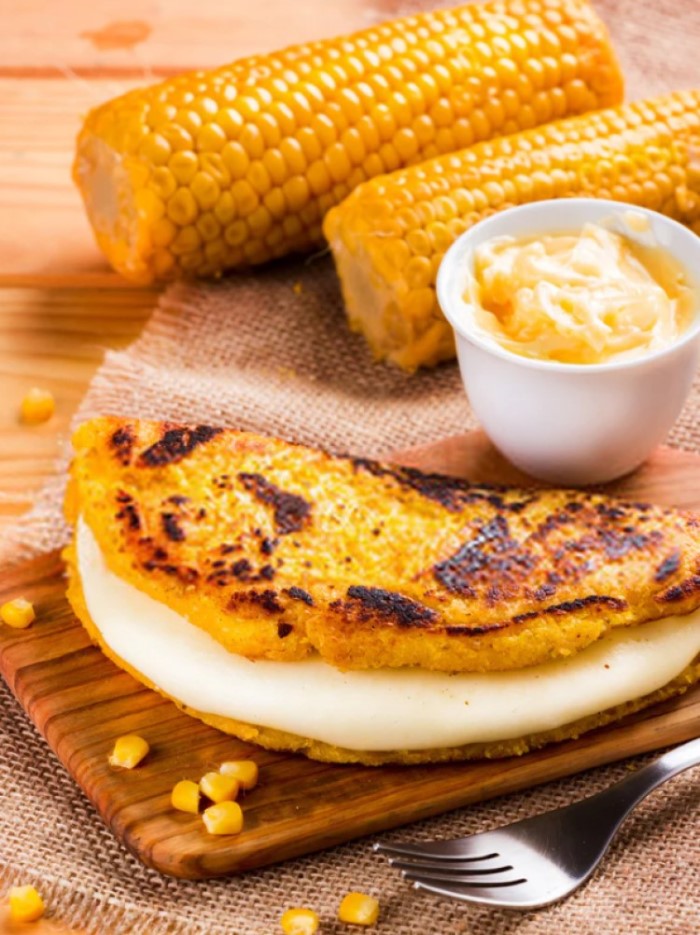Cake Recipe
Discover the Rich and Irresistible Flavors of Colombian Cornmeal Cake – A Must-Try Dessert!
If you’re looking for a delicious and unique dessert to try, why not give Colombian cornmeal cake a shot? This traditional cake is a staple in Colombian culture and is sure to delight your taste buds with its sweet, nutty flavor and dense, moist texture. To help you create the perfect Colombian cornmeal cake, cakepluss have put together a structured blog outline that covers everything from ingredients and preparation to serving suggestions and variations. Check it out below!
Brief overview of Colombian cornmeal cake

The cornmeal used in Colombian cornmeal cake is typically precooked or “instant” cornmeal, which has a finer texture than traditional cornmeal and results in a smoother, more uniform texture in the cake. The milk and eggs help to give the cake a rich and moist texture, while the sugar adds sweetness.
Colombian cornmeal cake can be served as a dessert or a savory dish, depending on how it is prepared. Some variations include adding cheese, ground meat, or vegetables to the batter, while others are topped with a layer of caramel or served with a side of fresh fruit.
Why Corn is very importance in Colombian cuisine?
Corn is an essential ingredient in Colombian cuisine and has played an important role in the country’s culinary traditions for centuries. The reason why corn is so important in Colombian cuisine is because corn has been grown in Colombia since pre-Colombian times and is the staple food of many indigenous communities. Therefore, corn has deep historical and cultural significance in Colombia. Corn is associated with traditional festivals and celebrations, such as the “Feria de las Flores” in Medellin and the “Festival del Maíz” in Cundinamarca.
Corn has a high nutritional value as a rich source of carbohydrates, fiber and vitamins and creates a feeling of satiety in Colombian dishes. Plus, it can be used in a variety of dishes in Colombian cuisine, from soups and stews to sandwiches, cakes and desserts. It can also be boiled, roasted, fried or pulverized, offering endless culinary possibilities.

Step-by-step instructions for making Colombian cornmeal cake
– Ingredients:
- kosher salt
- masarepa cornmeal
- hot water, butter or vegetable oil
– Instructions:
- Masarepa cornmeal should be mixed with salt in a large dish. Add some boiling water, then stir thoroughly with a wooden spoon. Melt some butter and stir it into the mixture. After that, wrap the dish in plastic and leave it stand for 15 minutes.
- Now start dividing the cake. If you want a thicker cake, divide the dough into 12 portions. For thinner cakes, divide the dough into 18 portions.
- Divide the cake into even balls. A little water can be added if it feels dry. Place each pellet between 2 sheets of cling film and gently flatten with the bottom of the pot. Any gaps at the edges may be smoothed out with your fingertips.
- Heat a cast iron skillet over low heat. In the pan, add a half-teaspoon of butter or vegetable oil. Place the cakes in the pan and fry for about 5 minutes on each side until they turn light brown. You may now enjoy it by taking it outside.
– Storing:
- Cooked cakes can be stored in the refrigerator in an airtight container for three to five days.
- Arepas may be frozen by layering them in a freezer-safe container with parchment paper in between to keep them from clinging to one another. Arepas may be stored in the freezer for a month.
- When eating it is best to warm them up in the oven or toaster.
Examples of traditional variations of Colombian cornmeal cake

Conclusion
Overall, Colombian cornmeal cake is a versatile dish that can be adapted to different tastes and preferences, making it a beloved part of Colombia’s culinary heritage. This cake has a deep cultural and historical significance, being a staple food for many indigenous communities since pre-Columbian times. From savory versions with chicken or meat to sweet versions with pineapple or extra cheese, there is a Colombian cornmeal cake for every taste and preference.


